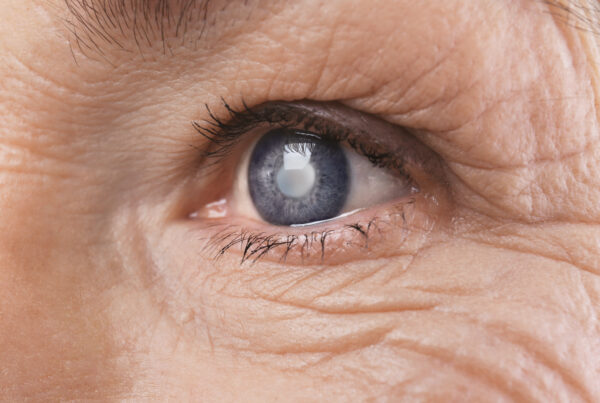
Holiday season got you stressed? From Christmas lists, to baking, to travel, and in-laws, the holidays can be the busiest and most stressful time of year. Stress, along with diet, exercise, and family history are some of the main factors in developing high blood pressure. High blood pressure can affect many organs in your body including you brain, heart, arteries, kidneys, and even your eyes.
Did you know that the eye is the only organ of the body where your blood vessels can be seen with a naked eye? Your eye doctor takes a look at the arteries and veins within your eyes each time you receive a dilated exam. The appearance of these vessels can give practitioners a clue about the health of the rest of your body as well.
Hypertension, also known as high blood pressure, exists when the pressure against the artery walls is elevated for an extended period of time. High blood pressure typically does not cause symptoms and therefore you can have high blood pressure for years without knowing you have it. Luckily, it can be easily detected. Once detected, you can work with your primary care doctor to get your blood pressure within a normal range. This may be done by diet and exercise or with medication. If your blood pressure remains uncontrolled for many years it may make you more at risk for stroke, heart failure, chronic kidney disease, and even vision loss.
Just like in the rest of your body, the blood vessels within your eyes are affected by high blood pressure as well. As the blood pressure rises over time, artery walls begin to narrow and harden. This can eventually lead to a condition called hypertensive retinopathy. In this condition, high blood pressure causes damage to the blood vessels of your retina in the back of your eye. In mild to moderate cases, this typically will not cause any visual symptoms. However, in more severe cases, you may experience headaches, as well as decreased vision or even vision loss.
Hypertensive retinopathy can be diagnosed by your eye care professional during your routine dilated eye exam. Your ophthalmologist or optometrist will assess the retina in the back of your eye and look for signs including: narrowing of the blood vessels, cotton wool spots, exudates, bleeding within the retina, and swelling of the macula and/or optic nerve. These retinal changes will come and go over time, but the best way to decrease your risk of developing worsening symptoms is to properly manage your blood pressure levels.
High blood pressure can also put you more at risk for developing other ocular conditions as well. A retinal artery occlusion occurs due to a blockage of retinal blood flow from an occlusion within an artery of the eye. This can appear as a sudden loss of vision in one eye. This is a true ocular emergency and requires immediate evaluation for a possible stroke. You can also develop a clot in your veins, known as a retinal vein occlusion. This too can appear as sudden central or peripheral monocular vision loss and is typically irreversible.
Although high blood pressure can lead to sight threatening conditions, it is easily detectable and manageable by diet, exercise, and the proper medication. Anyone over the age of 20 should make annual visits to their primary care doctor to ensure that their blood pressure is well controlled. Additionally, yearly dilated eye exams will help to catch any early changes, so come get your eye exam today!



